Wil delivers us his longterm review of the 2019 Giant Trance 29er
My recent experience of Giant bikes includes testing the latest Trance 27.5, the Anthem 27.5, and the Anthem 29. While none of them were exactly fire-starters, they’re all good bikes that suit their chosen intentions well.
Giant does a commendable job of producing solid, sensible mountain bikes. Rarely is there anything flaunty or boundary pushing about them. And save for that slight hiccup with the silly OverDrive2 debacle of ’11-’14 (#neverforget), it’s the sort of brand that avoids anything outrageous when it comes to proprietary technology. Then again, there’s a necessary level of responsibility and conservatism that comes with being one of the world’s largest bicycle manufacturers.
But then this came along.
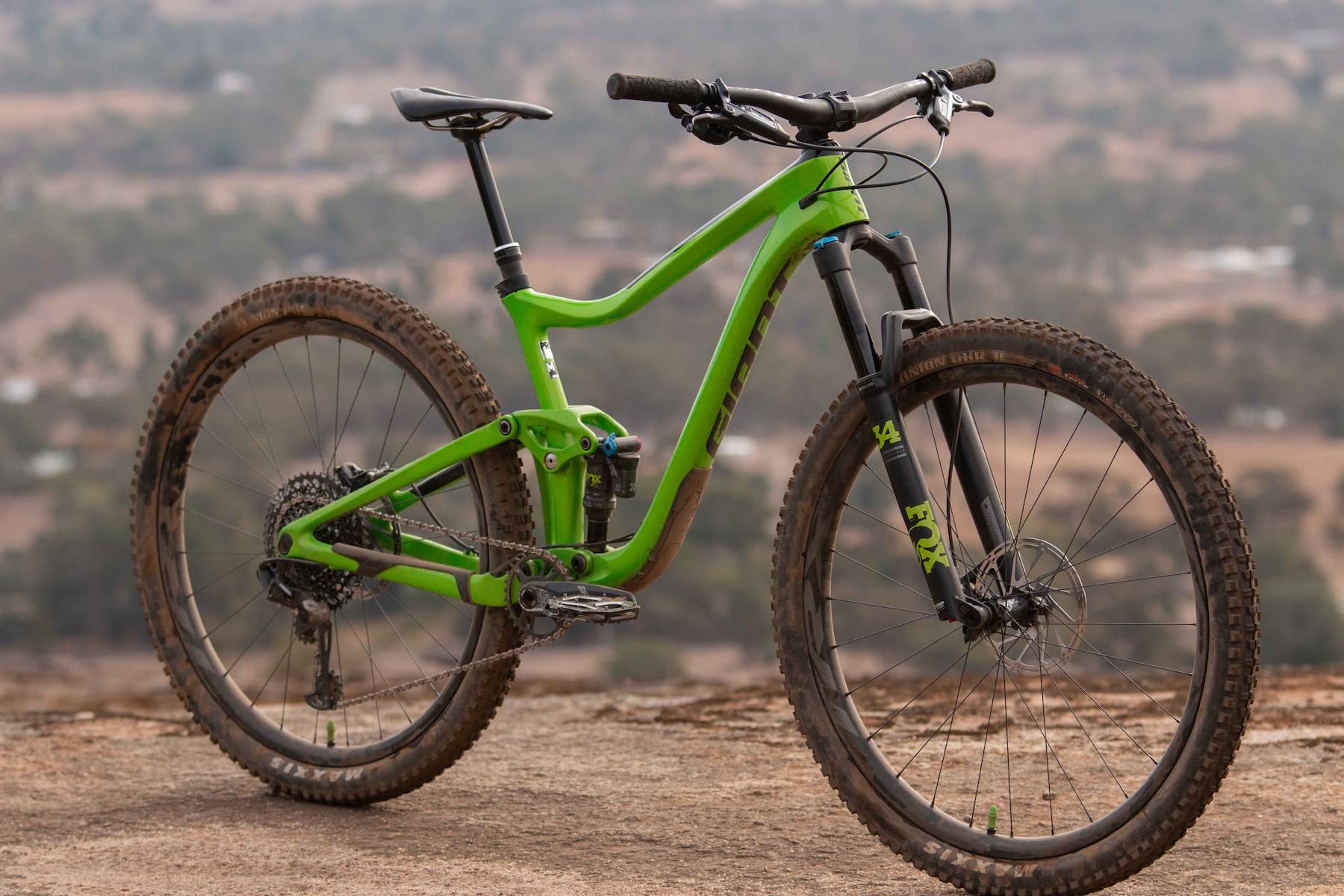
The New Trance 29
Having been in development for the past two years, the Trance 29 signals Giant’s return to the big wheels for its popular trail platform, following years of investing heavily in 27.5.
“The market was screaming for it”, explains Giant Bicycle’s Andrew Juskaitis. “And we obliged with significant updates to our Maestro suspension system to allow for a much shorter rear centre distance, in addition to much-updated overall geometry.”
Compared to the 150/140mm travel Trance 27.5, the Trance 29er is shorter on travel with a 130mm fork matched to just 115mm of travel on the back. Why those particular numbers?
“At 115mm, we were able to optimise the chainstay length to 435mm—a critical target for our engineering team and team riders”, responds Juskaitis. He acknowledges that while many consumers expected the new Trance 29 to have more travel, the focus here for the design team was very much on quality over quantity.
A glance at the spec list and geometry chart indicates that Giant has indeed cooked up a rather spicy dish for this little green jalapeño. And out on the trail, words like ‘responsibility‘ and ‘conservative‘ aren’t exactly the first things that come to mind.
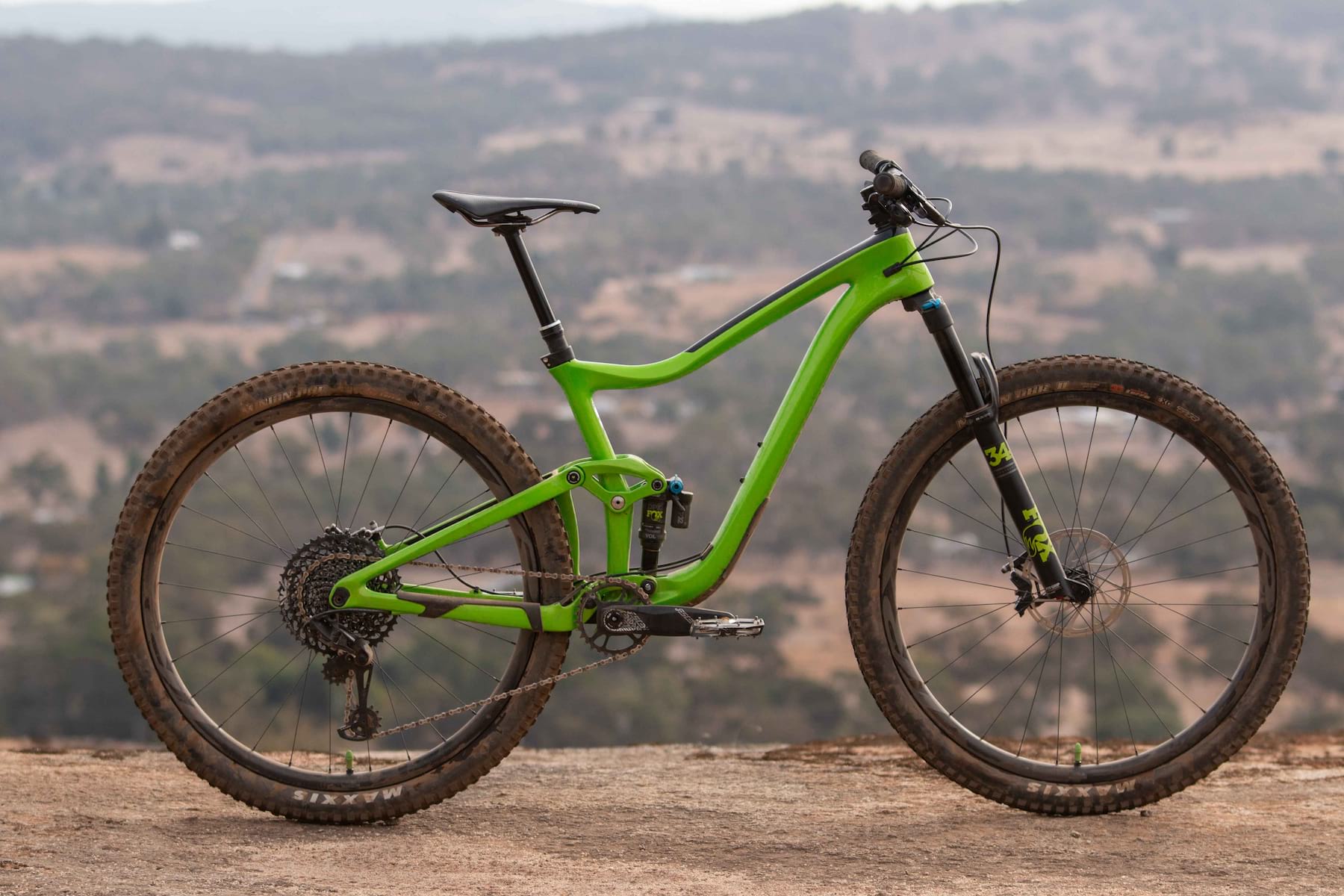
The Bike
For 2019, there are four Trance 29 models – two alloy and two carbon. The near logo-free, acid-green machine here is the Advance Pro 29er 1, which is the cheaper spec of the two carbon models. It still features a full carbon frameset, which is claimed to weigh just 2.58kg (5.67lb) including shock & hardware.
Giant ain’t exactly a newcomer to carbon fibre, and it shows in the Trance 29’s smooth lines. The short seat tube and curved top tube deliver notable standover clearance, still with plenty of room for a water bottle.
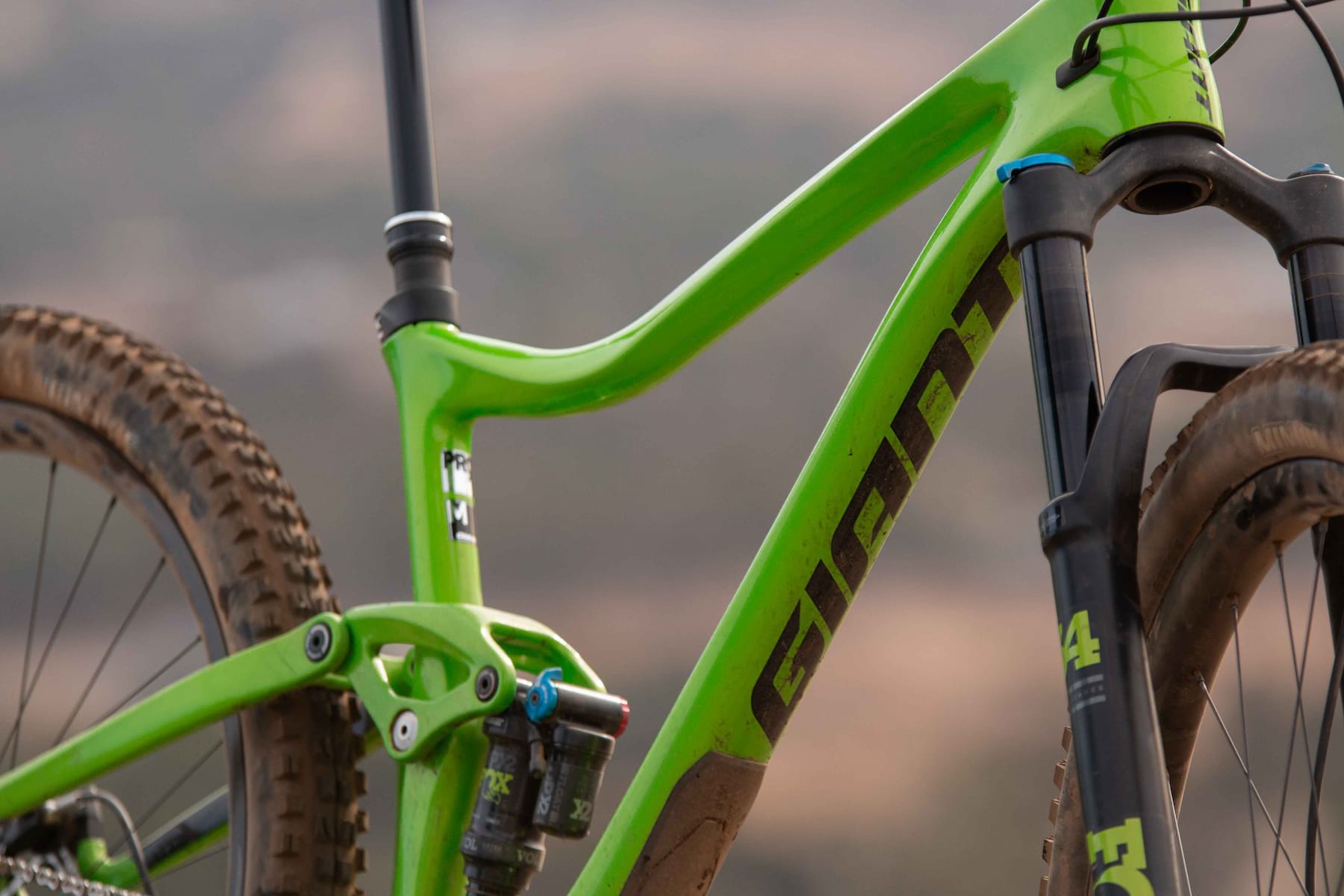
There’s a compact one-piece swingarm, along with tidy bolt-up axles and a PF92 shell that’s loaded with SRAM’s stainless steel DUB BB. Internal downtube cable routing is complemented by external pathways over the lower Maestro link, which is less finicky from a servicing perspective.
The only real eyesore is the truncated twin-bolt seat clamp. Aside from making saddle height adjustments faffy, it protrudes from the frame like a sort of abnormal tailbone growth.
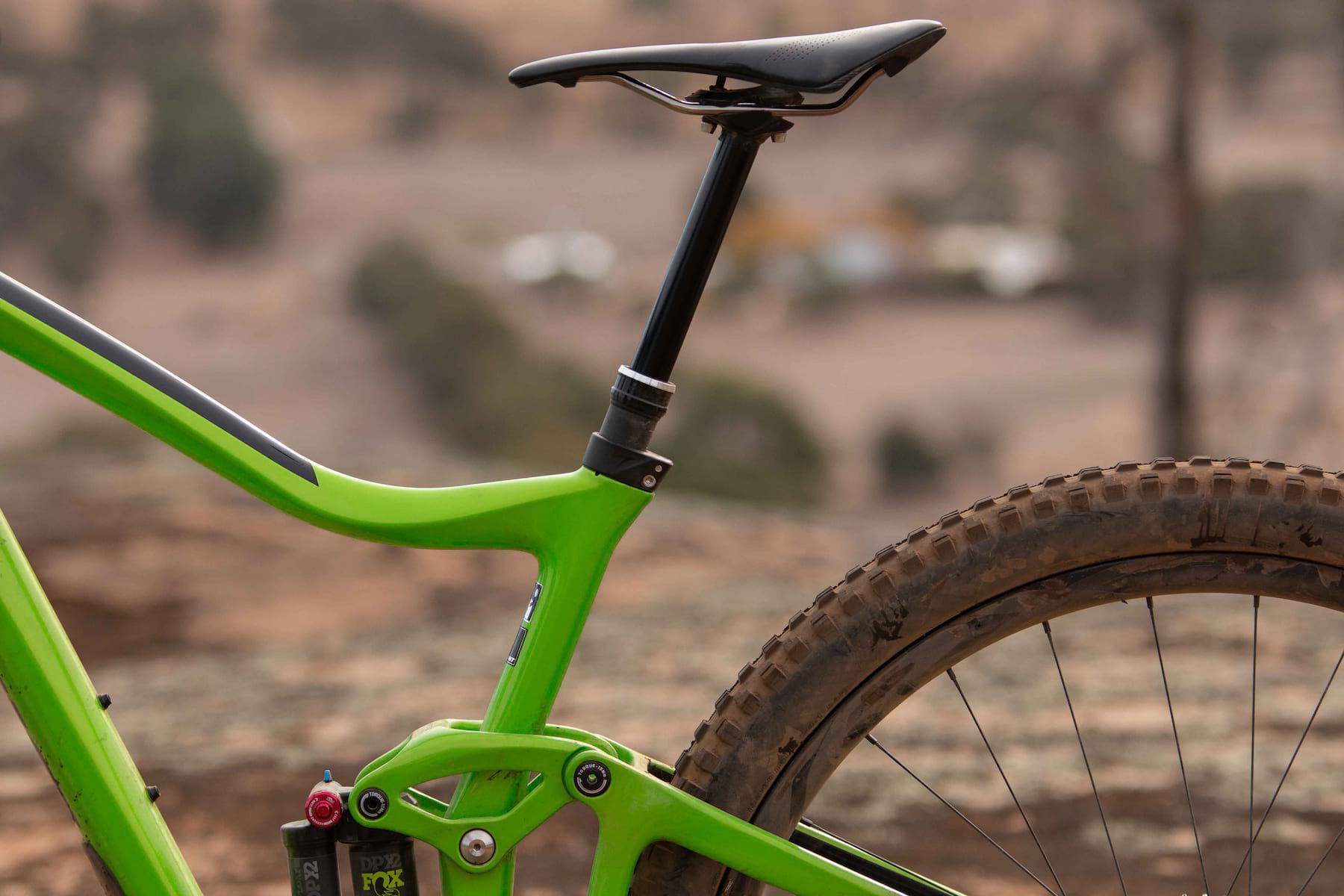
Though it skips the fancy DVO suspension of the Advanced Pro 29er 0 model, to be honest, I prefer the Fox package that comes on this bike.
There’s a superb 34 Float fork up front, and a Fox Float DPX2 shock out back. With its trunnion mount and tiny 42.5mm stroke, this dinky shock is custom built for Giant.
A piggyback shock on a 115mm travel 29er isn’t exactly a common sight, but the impressive damping control is a significant contributor to this bike’s descending nous.
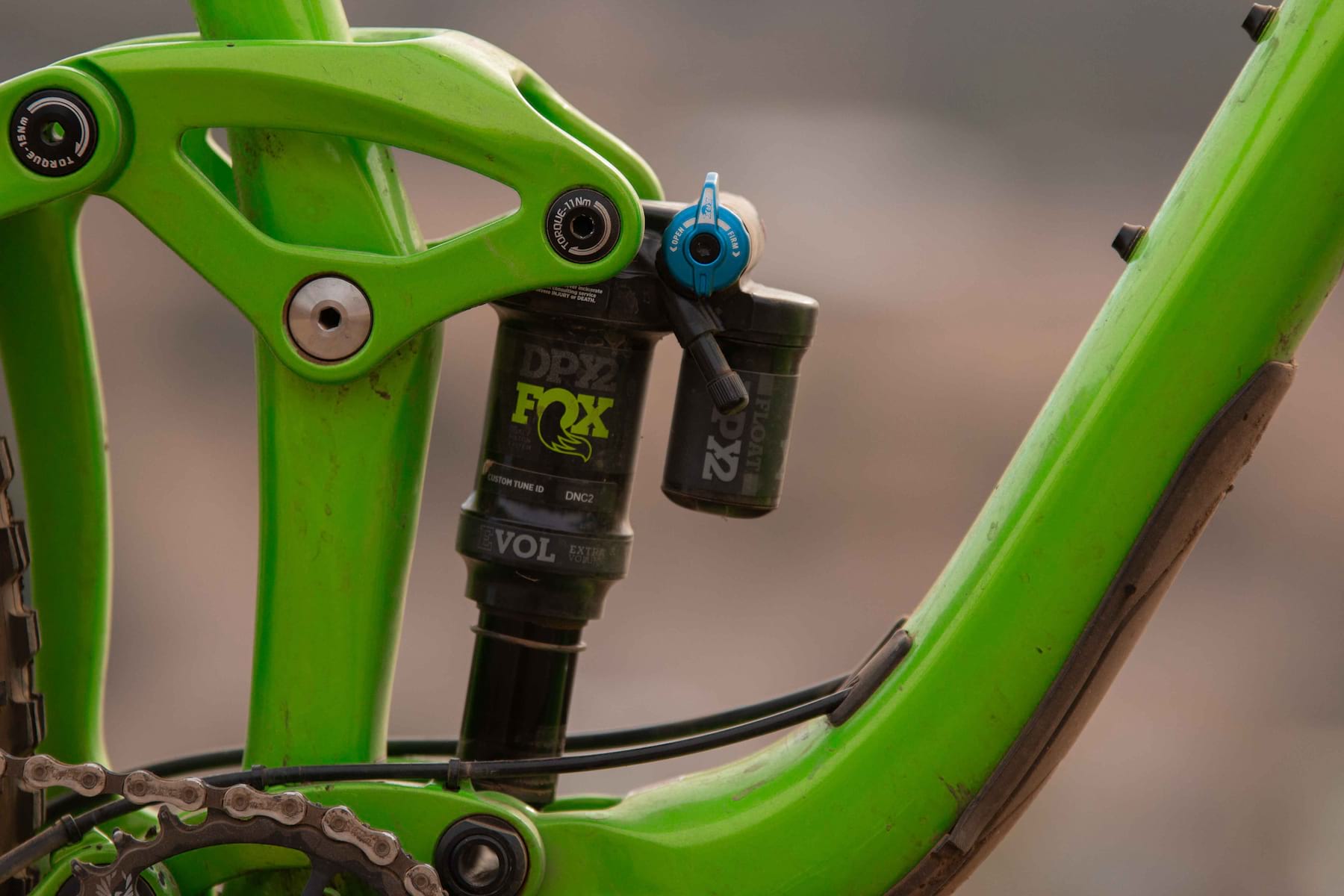
On a similar tip, Giant has spec’d aggressive 2.3in wide Maxxis Minions on the Trance 29, though there is room to fit up to a 2.5in tyre in the back end. The frame is 1x specific, and you can run up to a 36t chainring along with a full-coverage chainguide if you fancy. Add in the 780mm riser bars, short 40mm stem, and 180mm disc rotors, and the Trance 29’s intentions become clearer again.
This theme extends to the Trance 29’s contemporary geometry, which includes a 66.5° head angle and a reduced offset fork – both of which are designed to increase high-speed stability.
As well as being slacker than the Trance 27.5, the Trance 29 is also longer. Our Medium test bike has a 442mm reach, which I found ideal for my 175cm height. That said, it isn’t huge by modern trail bike standards, and the 480mm reach on the XL size may still be too short for really tall riders.
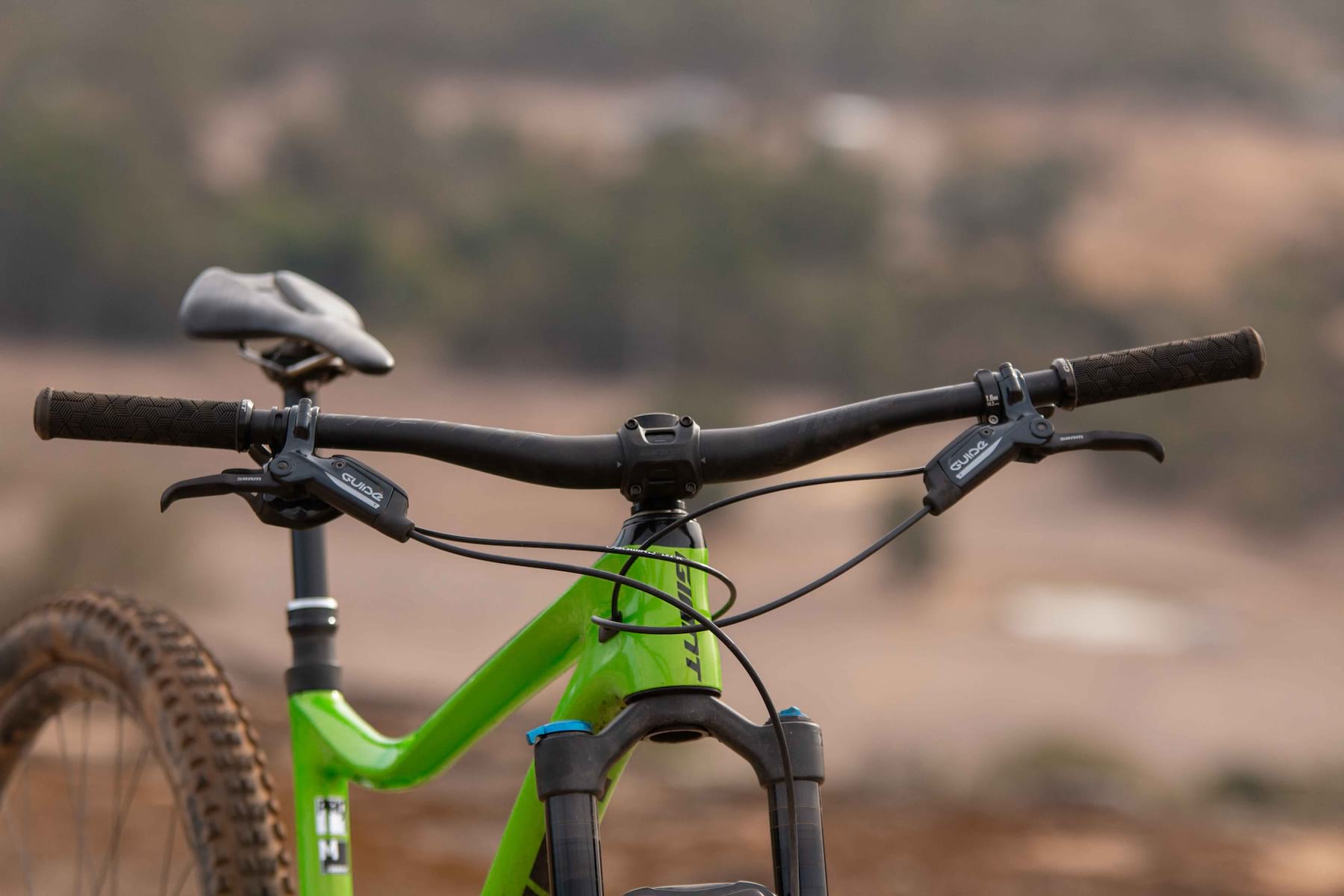
Setting Up
Given my dislike for Giant’s squishy lock-on grips, they were the first thing to be removed. I also swapped the tyres around, since I prefer the more aggressive Minion DHR II tread on the front.
Wheels are Giant’s own TRX 1 model, which feature hookless carbon rims with a 30mm internal rim width. They weigh 1802g on the workshop scales – not super light, but then they are billed as being properly EWS-worthy.
Unlike pretty much every other stock bike I’ve built from a cardboard box though, the Trance 29 does not come with inner tubes fitted. Instead, the wheels come pre-taped and fitted with tubeless valves from the factory. Giant includes sealant and a valve core tool in the box, so all you need to do is remove the valve cores, dump a bottle of sealant into each wheel, and away you go. How good is that?
As for pressures, I set the tyres at 20psi for the front and 24psi on the rear.
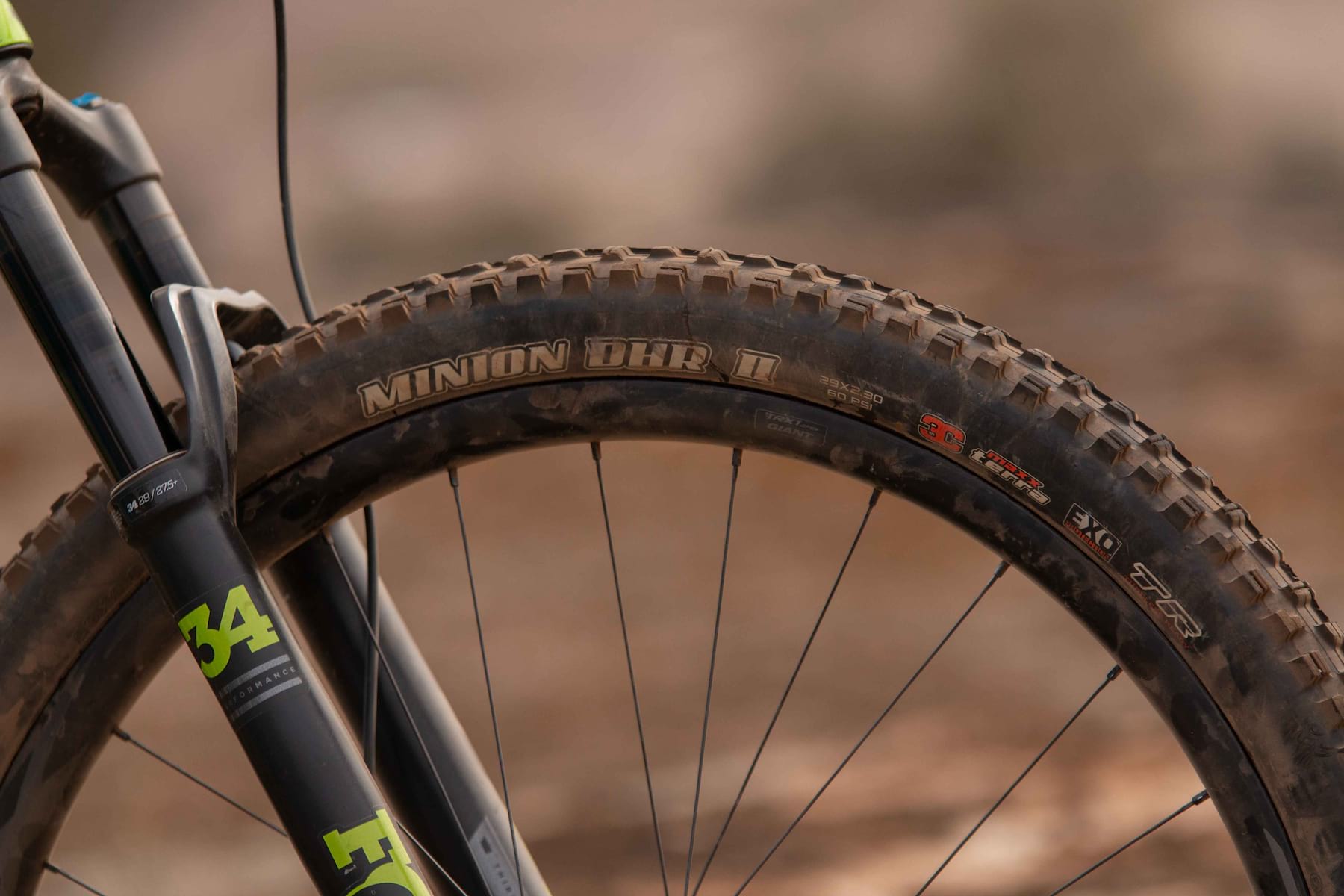
The only other change I made was upgrading to a 150mm travel dropper post (Small & Medium sizes come with a 125mm dropper as standard). However, it’s worth noting that the interrupted seat tube limits insertion depth. Where the Giant-branded post is now is basically as low as it can go.
Otherwise, the Medium bike fits me well out of the box. I’ve lowered the stem down to get a bit more weight onto the front tyre, and I’ve shifted the saddle back on the rails to bring my knees into a comfortable pedalling position.
Giant lists an effective seat tube angle of 74.5° based on a specific saddle height for each frame size. On the Medium, that’s a 72.5cm BB-to-saddle height. Because my saddle is lower than that, the angle effectively steepens, and hence why I need to run the saddle further back on the rails.
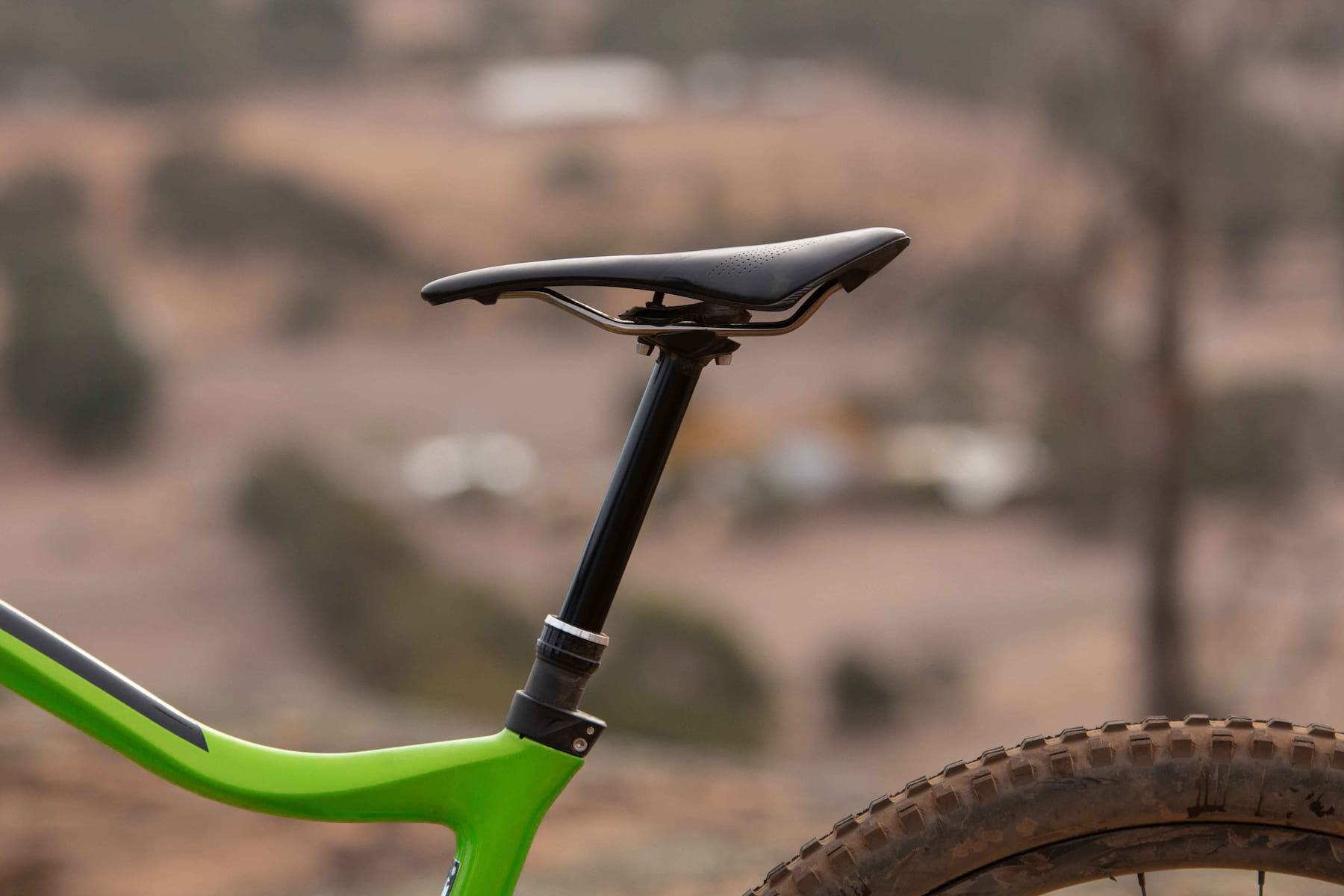
As for suspension setup, I initially ran the rear shock with 30% sag and 200psi for my 70kg riding weight. This yielded a smooth and supple feel, though with occasional bottoming on flatter landings.
After a few rides, I upped the pressures to 220psi, which brought sag closer to 25% and basically eliminated bottom-out. Weirdly though, even with more pressure, the suspension actually felt smoother and more lively. This was most likely because the shock was now sitting higher in its travel and had been lifted out of the firmer mid-stroke and back up into its ‘active zone’.
My hot tips for Trance 29 owners? Take your time with setup and make sure to get out the metal ruler – the difference between 25 and 30% sag on that little shock is literally 2mm at the O-ring. And for those on the heavier side, consider adding a bigger volume spacer so as to avoid running mega high pressures.
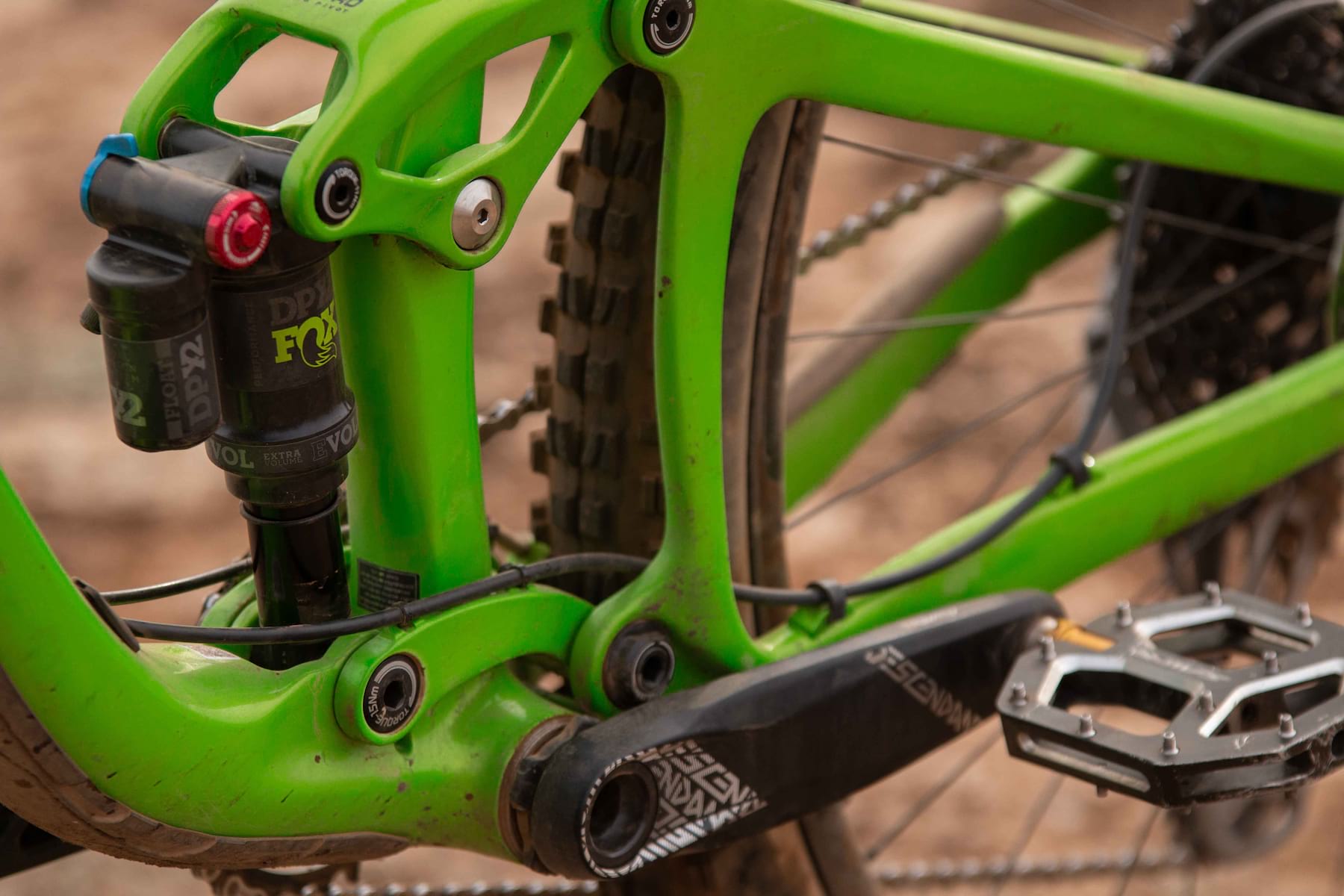
Because Giant has spec’d a light rebound tune for the DPX2 shock, the back end is also quite springy out of the box. I ended up just two clicks off the slowest setting (2/14 clicks) to prevent the back end from pogo’ing around too much.
To balance out the back end, and to access more of the travel, I removed one of the three stock volume spacers out of the fork’s air spring. This gave the fork a more active and linear feel, which allowed me to run more pressure (78psi) and less sag (26%, measured standing up on the pedals). Additionally, setting the low-speed compression halfway helped to resist brake dive, better preserving the head angle while descending.
As per Fox’ recommended guidelines, I set the fork’s rebound damping at 10 clicks from full slow (10/22 clicks).
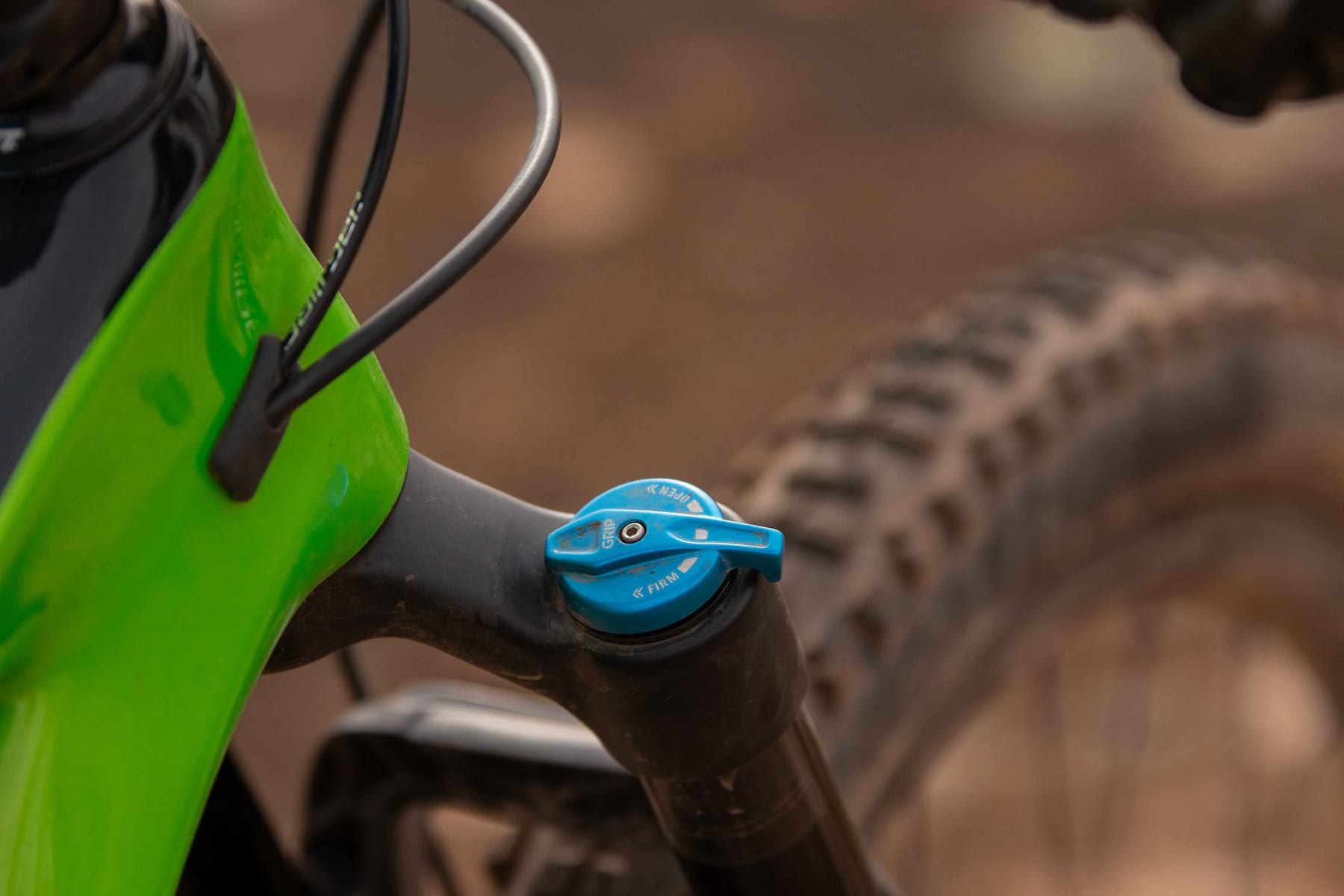
The Ride
Upon first setting off on the Trance 29, it’s immediately apparent that this is no long-legged XC bike.
Since moving to metric-sized shocks and trunnion mounts, Giant’s new generation Maestro suspension has placed the emphasis on small-bump sensitivity. The result is a smooth and comfortable feel under the rider, but noticeable pedal bob if you’re just plodding along.
On the Trance 29, this slightly boggy feel is exacerbated by the Minion DHF/DHR II combo, which is neither fast rolling nor lightweight (956g & 873g respectively). Add in the 3-pawl freehub’s lethargic 15° engagement, and this isn’t exactly a bike that lives for going uphill.

The active suspension, with its supple off-the-top feel, does ensure good traction levels if the ascent is rough and technical though. And the 30t chainring allows you to find a nice low gear to establish a steady rhythm.
I soon discovered the shock’s 3-position compression lever too, which became a handy tool to help stabilise the back end on longer ascents. I left the shock open for most off-road riding, but the Medium setting was useful for rough double-track climbs, and the Firm setting – while not a complete lockout – is welcome on bitumen.
Despite the slack front end, the Trance 29 proved to be manageable on uphill switchbacks – up to a point. The short stem keeps the front wheel nice and responsive for tugging around the tighter turns, though the wide bar means uphill handling is a rather dynamic and wiggly affair.
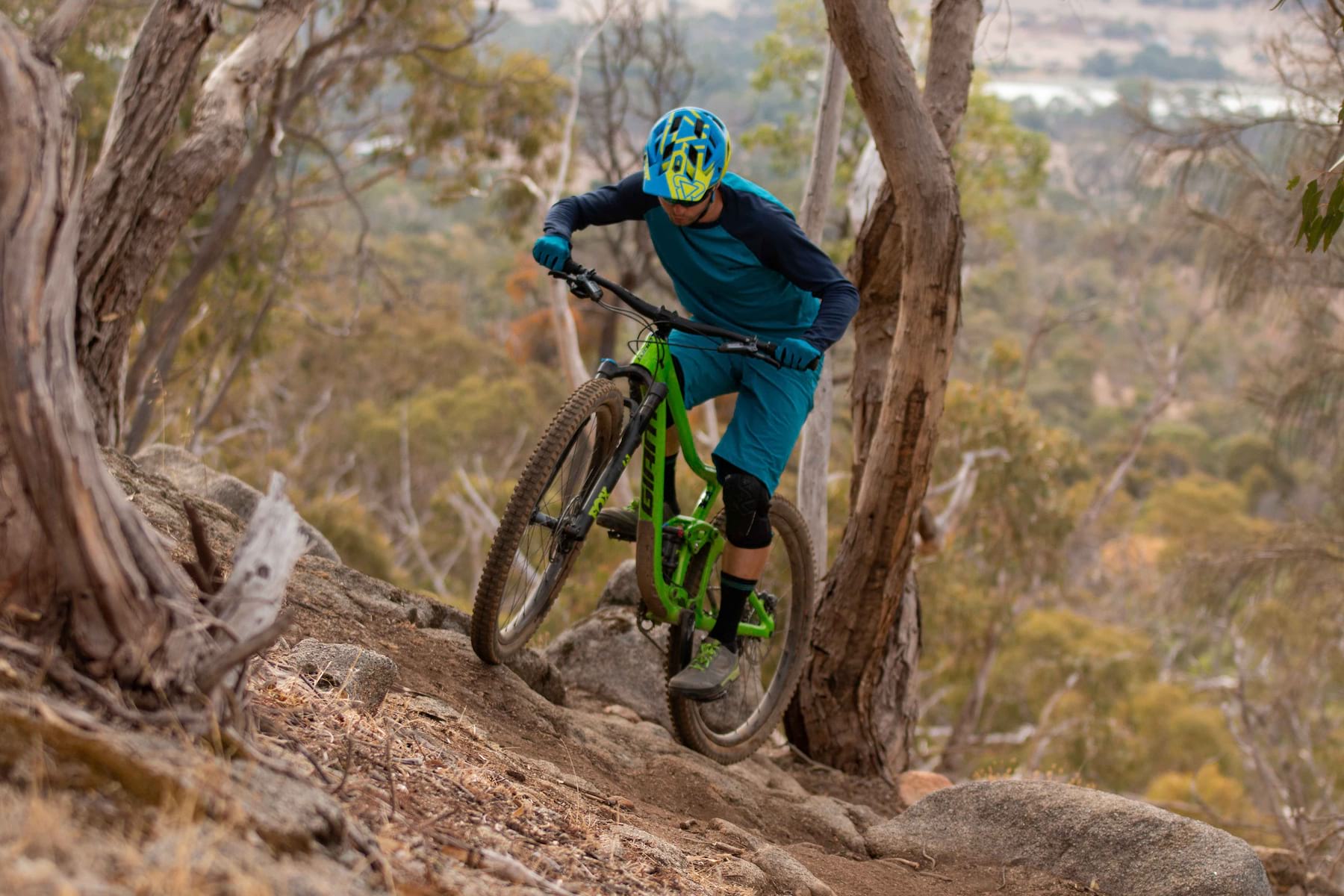
During some testing up at Mt Buller in bigger alpine terrain, the Trance 29 seemed to run out of puff once the gradient kicked up beyond 15%. At this point the front tyre just gets too light, and the tall front end makes it difficult to keep it stuck all the way past the apex. These were pretty hefty climbs though, and geometry always has a compromise.
Overall weight for our Medium test bike is a respectable 12.67kg (27.87lb). I got this down to 12.1kg (26.62lb) after switching out the wheels and tyres to a lighter and faster-rolling setup. I also fitted a narrower 760mm carbon barn and a longer 50mm stem.
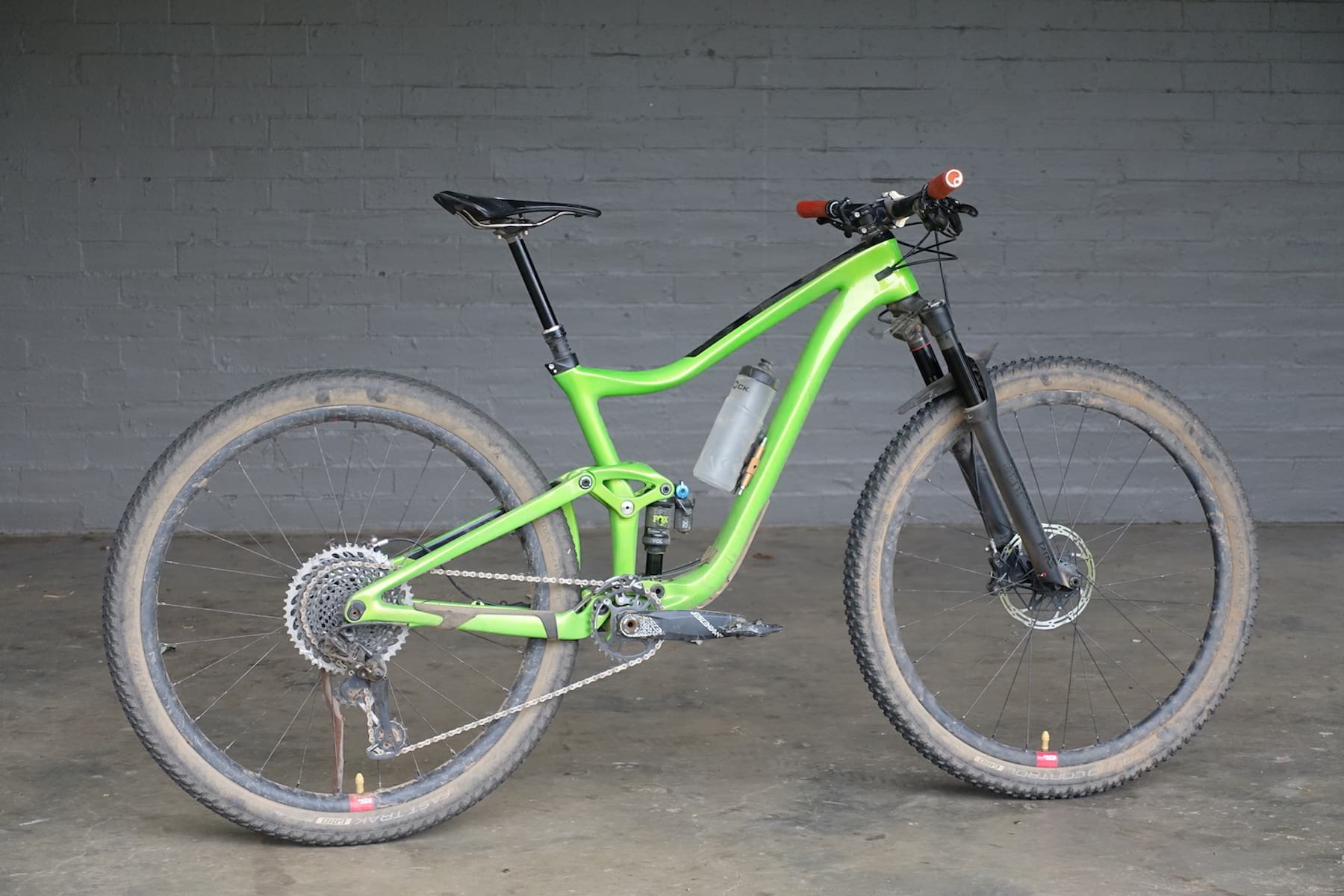
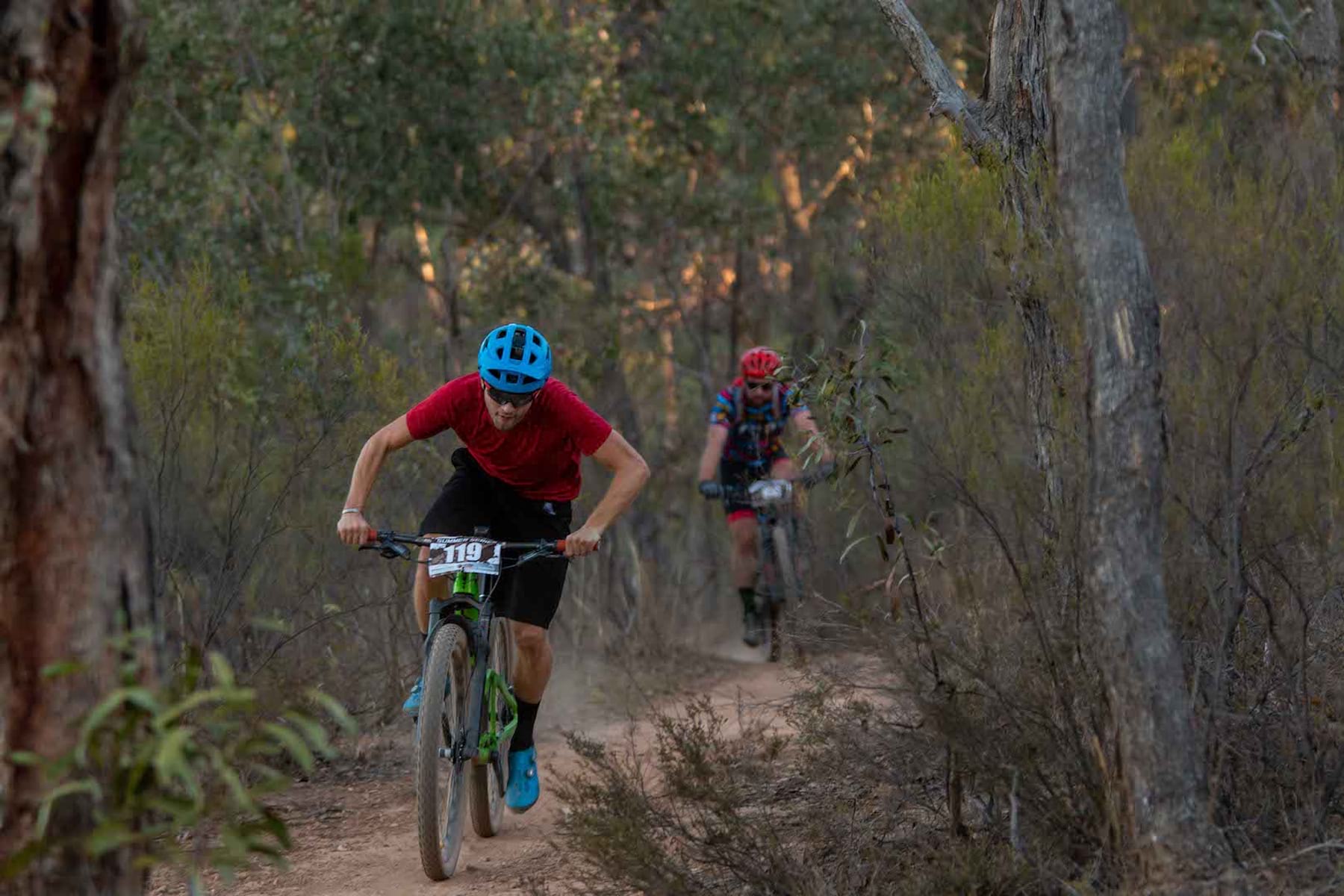
With this ‘XC’ setup, I took the Trance 29 to a local dirt criterium to see how it would handle some fast-paced racing. And it turns out pretty well. Although the Maestro suspension is quite active while cruising, it does firm up noticeably under power. Give it some beans and hammer the pedals, and those two links stiffen up and keep the shock nice and steady.
It’s a similar story with handling. The Trance 29 is a bike that responds best to forceful inputs, with its aggressive geometry requiring you to commit to a front-heavy riding style. As well as lowering the stem, I found that rolling the bars forward encouraged me to bring my riding position further forward. Wider 800mm bars also helped in this regard, bringing my chest further over the head tube, and pushing more weight onto the front tyre.
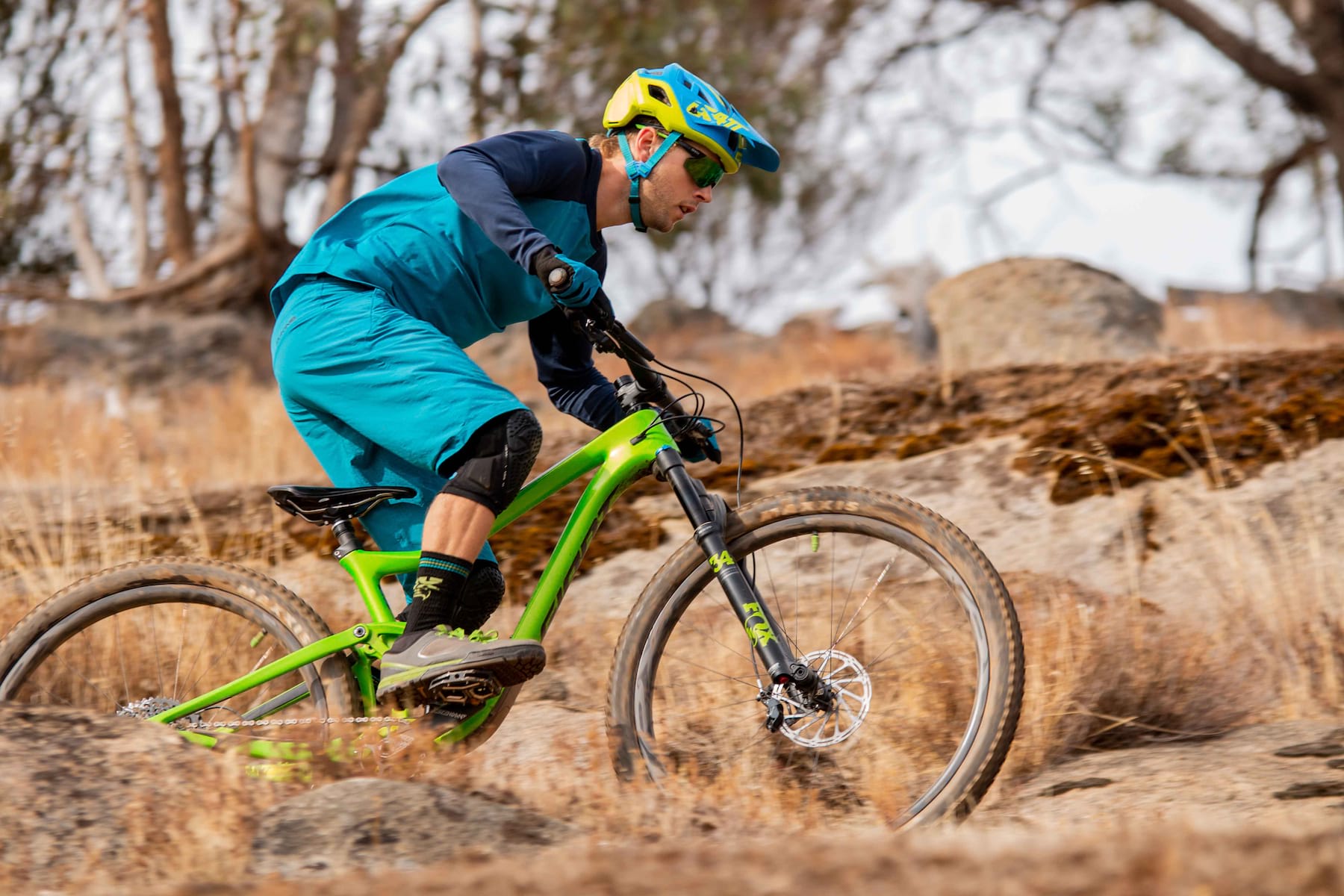
If you don’t get forward, the front wheel unweights and the bike is prone to understeer. And the tighter the corner, the more this becomes apparent. I found bending my elbows and leaning the bike hard was the best technique for carving turns.
Thankfully the brilliant Maxxis Minion tyres provide reliable hook-up through the turns across a wide variety of trail surfaces. The soft cornering blocks rarely show any signs of breaking traction, allowing regular access to those heavy lean angles. After four months of testing, they are starting to deteriorate quite a bit though.
Once you commit to the necessary riding position though, the Trance 29 unlocks incredible high-speed control. The handling is hugely confidence-boosting on the descents, and it barrels along with far more conviction than a 115mm travel bike really should.
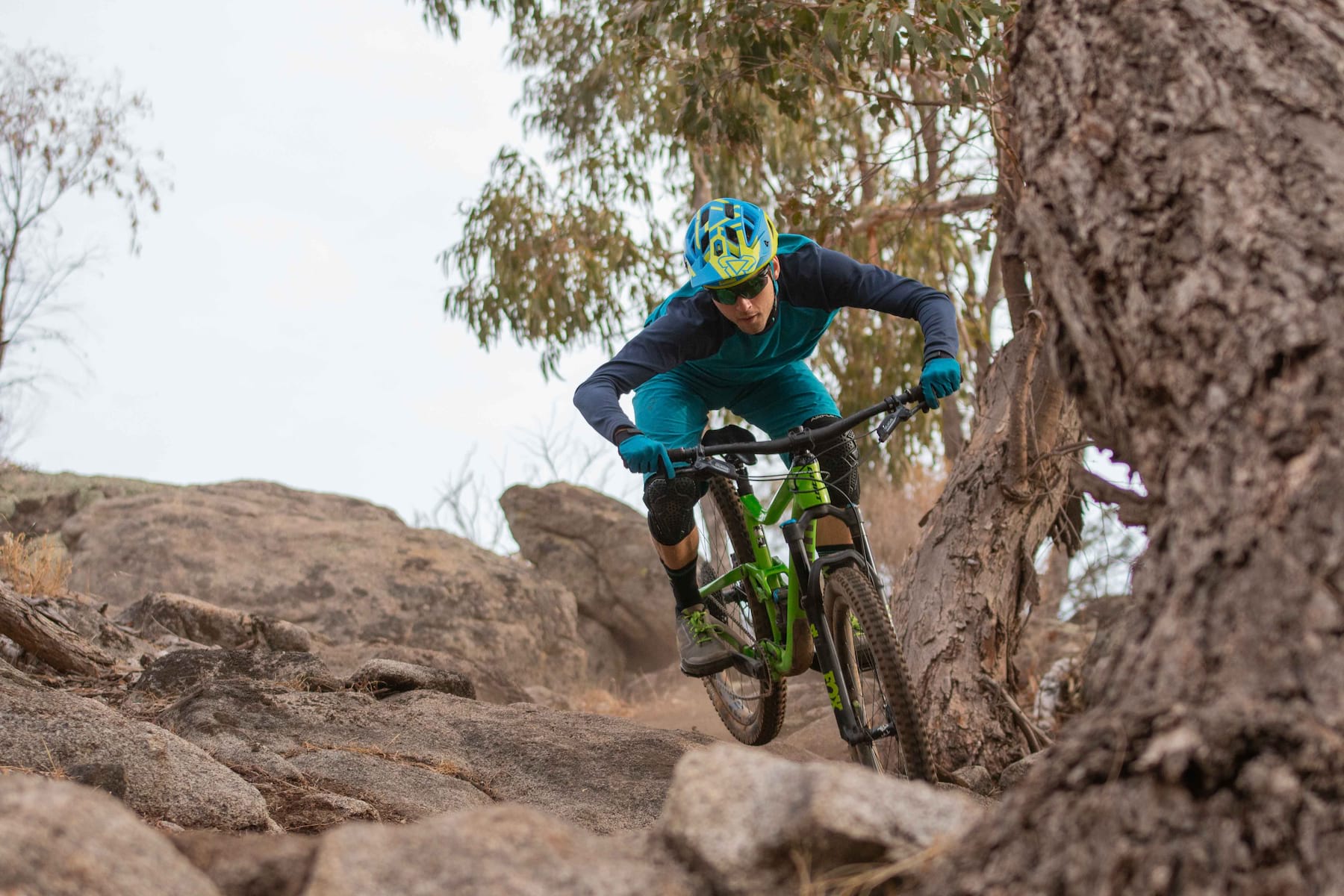
With a hefty amount of trail (117mm), the front-end steering on the Trance 29 is planted. In comparison, the Canyon Neuron CF I recently reviewed has a trail figure of just 99mm, and the difference in stability between the two bikes is marked. Whereas the Canyon felt wriggly and occasionally nervous while descending at speed, the Trance 29 feels unwavering. All it wants you to do is to go faster.
The front wheel’s ability to self-correct after being knocked off line was made apparent on one of my local trails, where I accidentally clipped a tree with my right grip while descending at 43km/h. I fully expected to have been spat off the front of the bike. But as my heart skipped a beat, I watched the front wheel almost instantly flick back to its forward-facing position, and I carried on down the trail, pulse racing.
When you’re absolutely walloping along on more natural, rougher descents – which is easy to do when the Trance 29 feels as unflappable as it is – you will discover the limits of the rear travel. The DPX2 shock does a bang-up job of handling everything from heavy landings through to rapid high-speed spikes. However, as good as the damping is, there is still only 115mm out back.
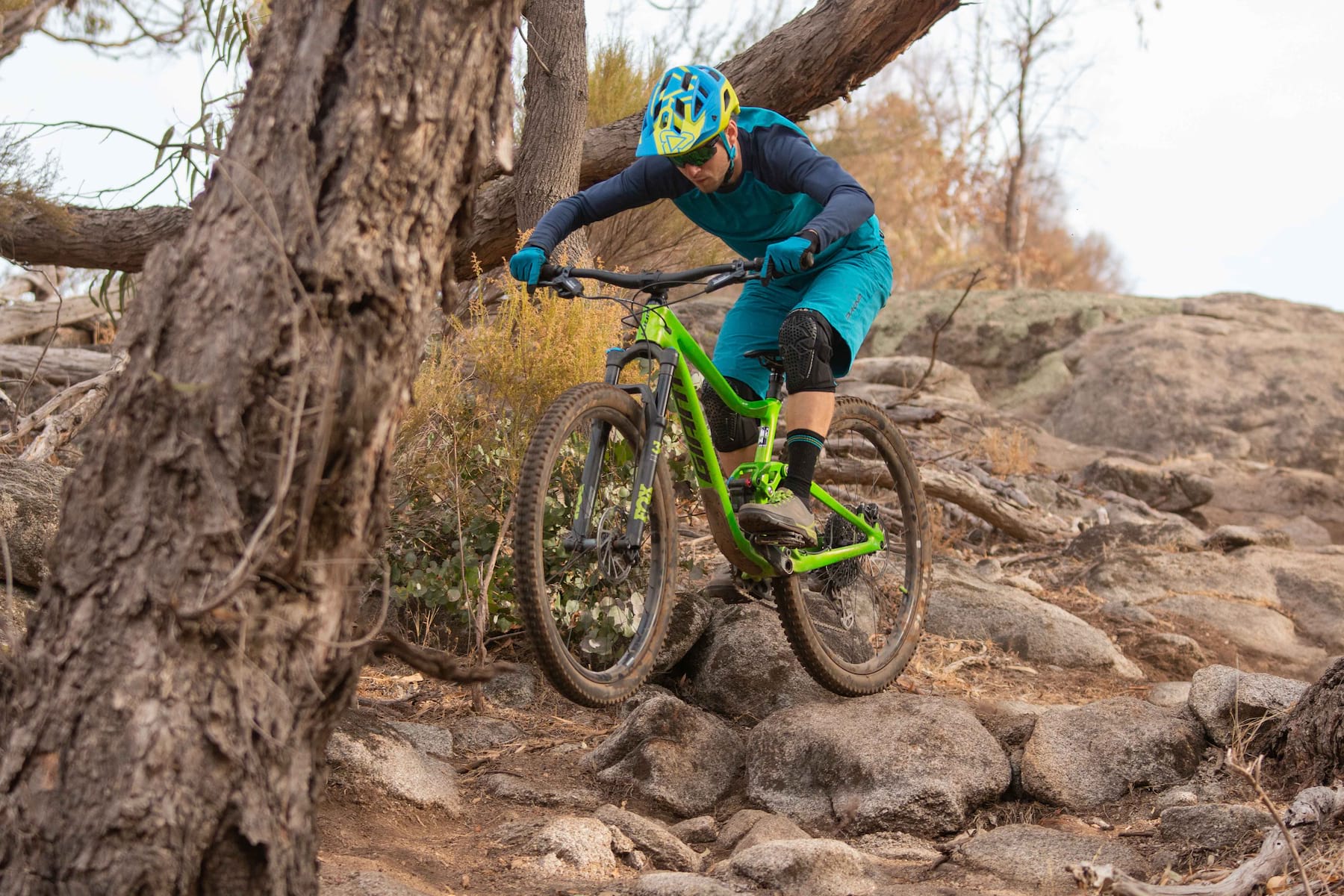
On the really big and ugly rock gardens, I found I’d get pin-balled around more than I would on a comparable 140/150mm travel bike. That’s to be expected though. And it isn’t a horrible experience, since the Trance 29 manages the end of its travel well, and the geometry keeps everything steady.
A side-effect to all that front-end stability is the bike’s tendency to stand up under hard braking. This is a result of the large trail figure, and the fact that heavy braking shifts your weight onto the front wheel, exacerbating the caster effect and the front wheel’s desire to remain pointing straight ahead. Go too fast into a corner and tap the brakes, and the front wheel pulls up out of the lean angle, resulting in understeer.
Again, it’s a case of committing to the corner, staying off the brakes, and pushing down hard into the tyre’s cornering edges. This can be difficult on successive S-bends, where the reduced flick-ability makes the Trance 29 hard work to rapidly change direction if you’re not investing the effort.
This led to something of a paradox in the Trance 29. If I was having a bad day and feeling tired, it was a fatiguing, and frustrating bike to ride. On a good day with plenty of energy though, I felt absolutely unstoppable – it’s a beast.
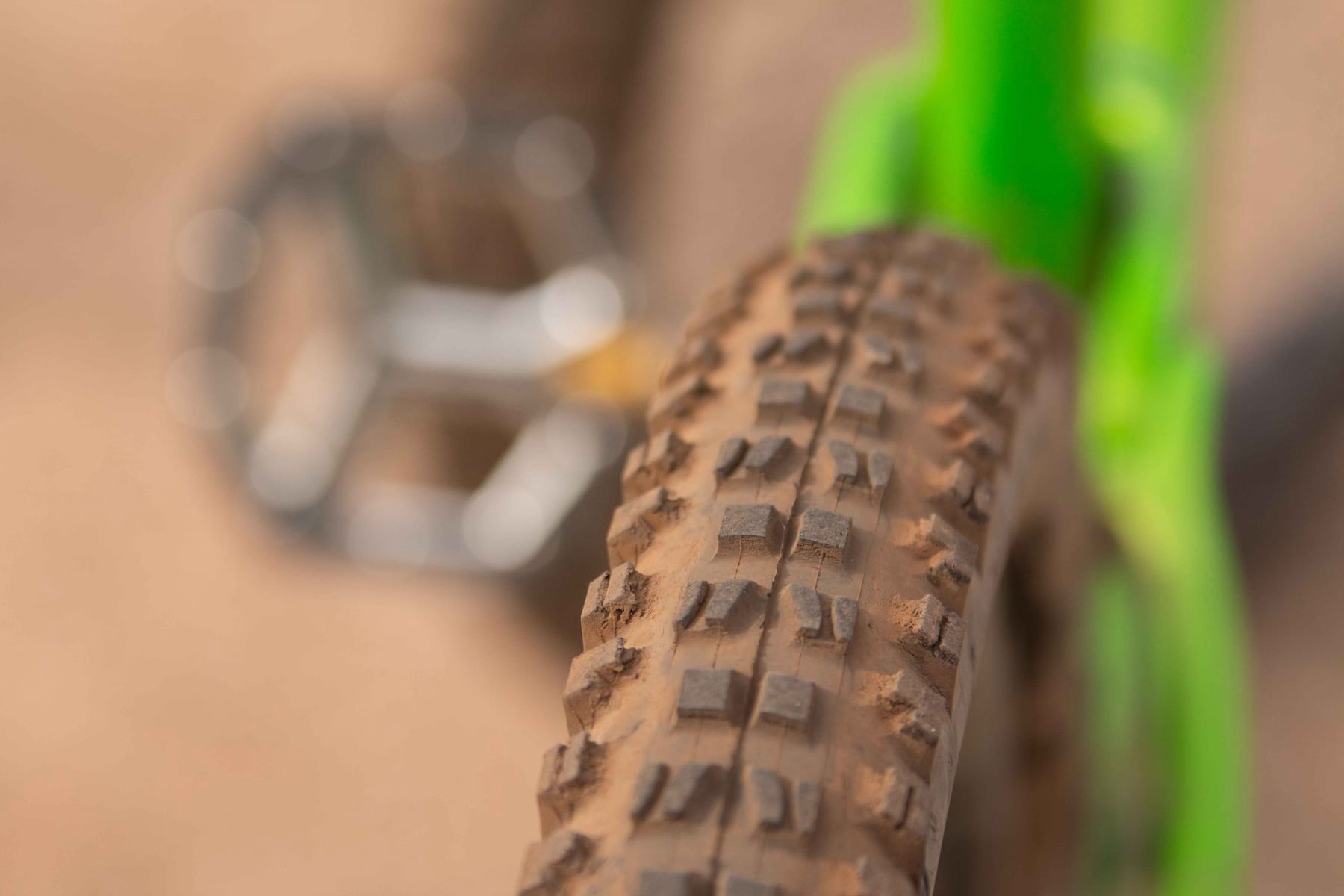
Component Notes
Though the tyres are starting to show evidence of a hard life, everything else on the Trance 29 has held up pretty darn well.
The frame gets stick-on rubber protection in the main impact zones, and a big cut on the belly panel shows it’s done its job already. Some more armour could be used to prevent paint-chipping over the cable entry port on the drive-side chainstay though.
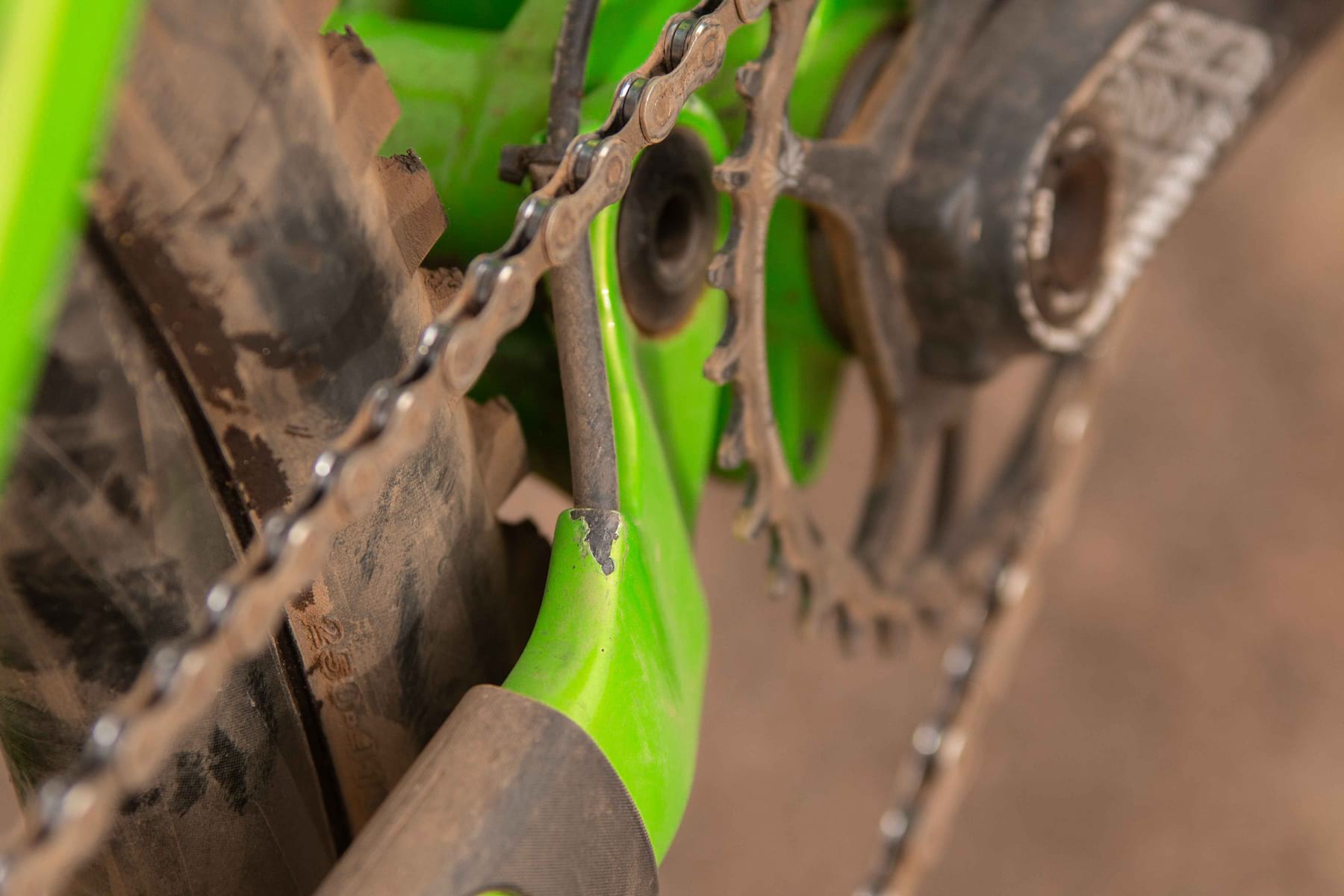
While Giant gets a thumb’s up for most of the Trance 29’s spec, the Guide T brakes are a let-down. I might be being harsh here, but it seems like a real cost-cutting measure on a bike that costs over £4k/$6k. The 4-piston callipers and 180mm rotors should deliver solid power, but the cheap, flexy levers struggle to transmit the necessary leverage – something that’s made apparent when you hit the ridiculous speeds this bike is capable of.
Oh and for any Guide owners struggling with excessive lever throw; make sure you run a few bleeds through the lines to remove the sneaky bubbles you may have missed the first time. After a second full system bleed, I found the bite point returned to where it should be.

As with other recent Giant test bikes, I did have the main pivot of the lower Maestro link loosen on me a couple of times. The alloy nut requires a large crescent wrench to tighten, which isn’t something you’ll have on a multi-tool. Make sure you check this periodically, and add fresh Loctite when needed.
Speaking of bolts, Giant has done an impressive job to use as many different sizes as possible on the Trance 29. Most annoyingly is that the seatpost clamp needs a 4mm hex key, while the saddle clamp require a 5mm. The other facepalm is the stem, which bizarrely uses 5mm bolts for the steerer tube clamp, and 4mm bolts for the face plate. Is someone playing ‘Whacky Bolt Roulette’ at the Giant factory?
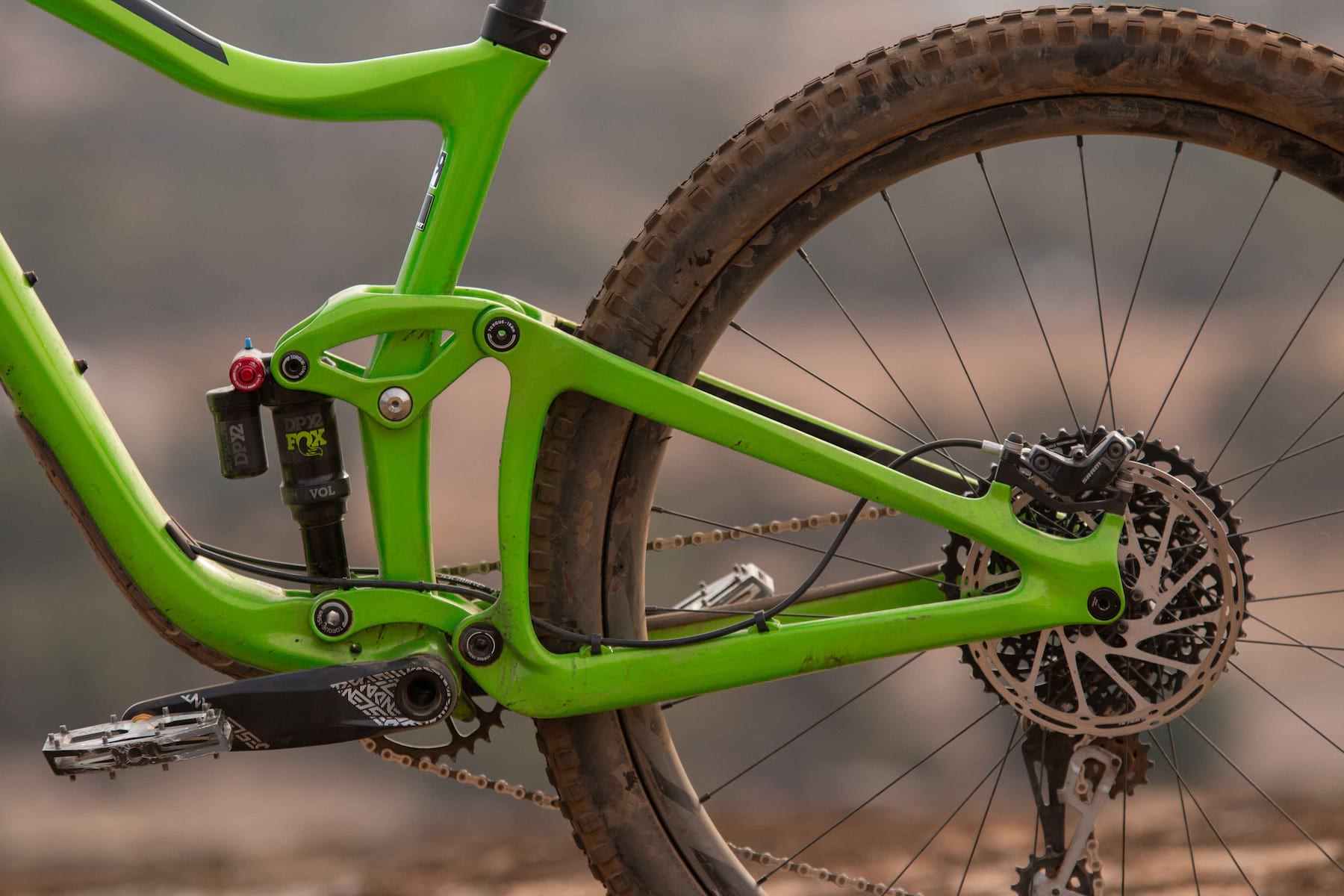
The dropper post isn’t the smoothest operator, and while it worked ok for me, we have had issues with Giant posts in colder conditions. I don’t like the thumb paddle either, which feels cheap and wobbly.
Otherwise Giant’s own-brand cockpit did the job, and the TRX 1 wheels have been solid too. Stay tuned for a separate longterm review on those carbon hoops.
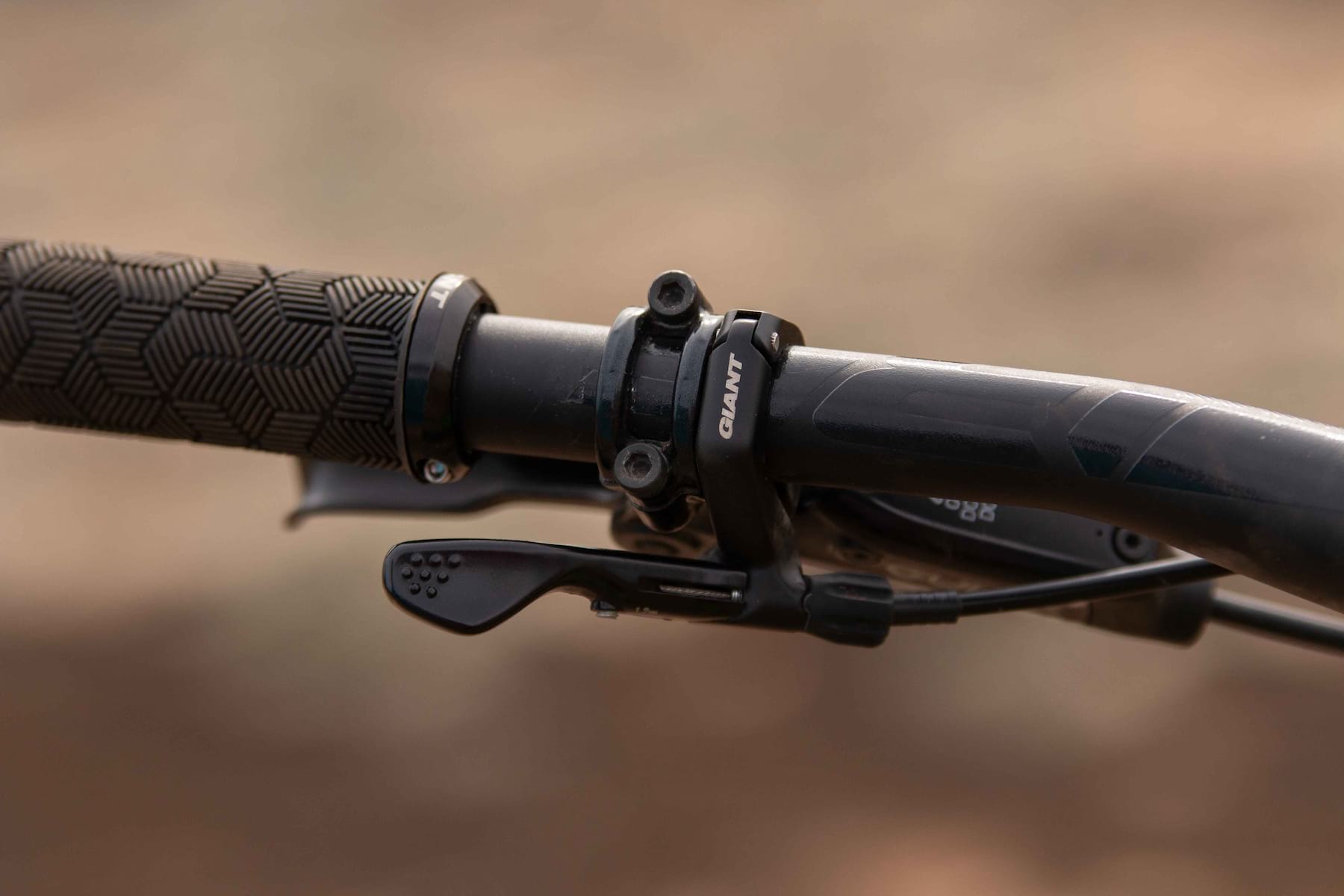
Three Things That Could Be Improved
- More powerful brakes. The Guide T’s are actually ok brakes, but this bike demands moar powa!
- Additional frame armour around the chainstays to prevent paint chips
- A higher quality dropper post & lever. If this were my bike, I’d be putting on a Wolf Tooth ReMote for sure
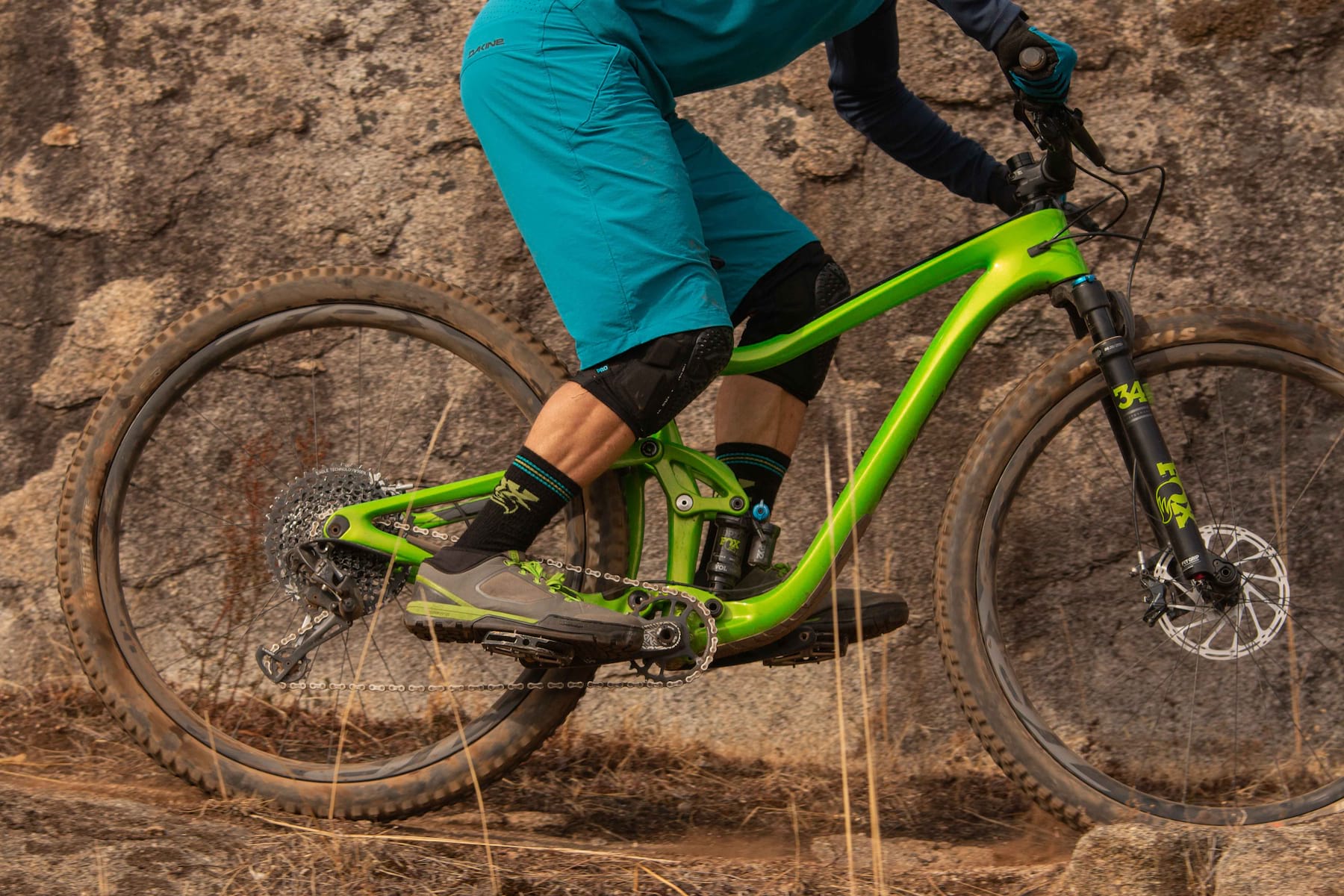
Three Things I Loved
- Unflappable high-speed geometry – the Trance 29 wants to go hard and fast
- The high quality suspension, and in particular, the piggyback shock’s impressive control
- Grippy, dependable Maxxis Minion tyres – kudos to Giant for giving this bike proper rubber
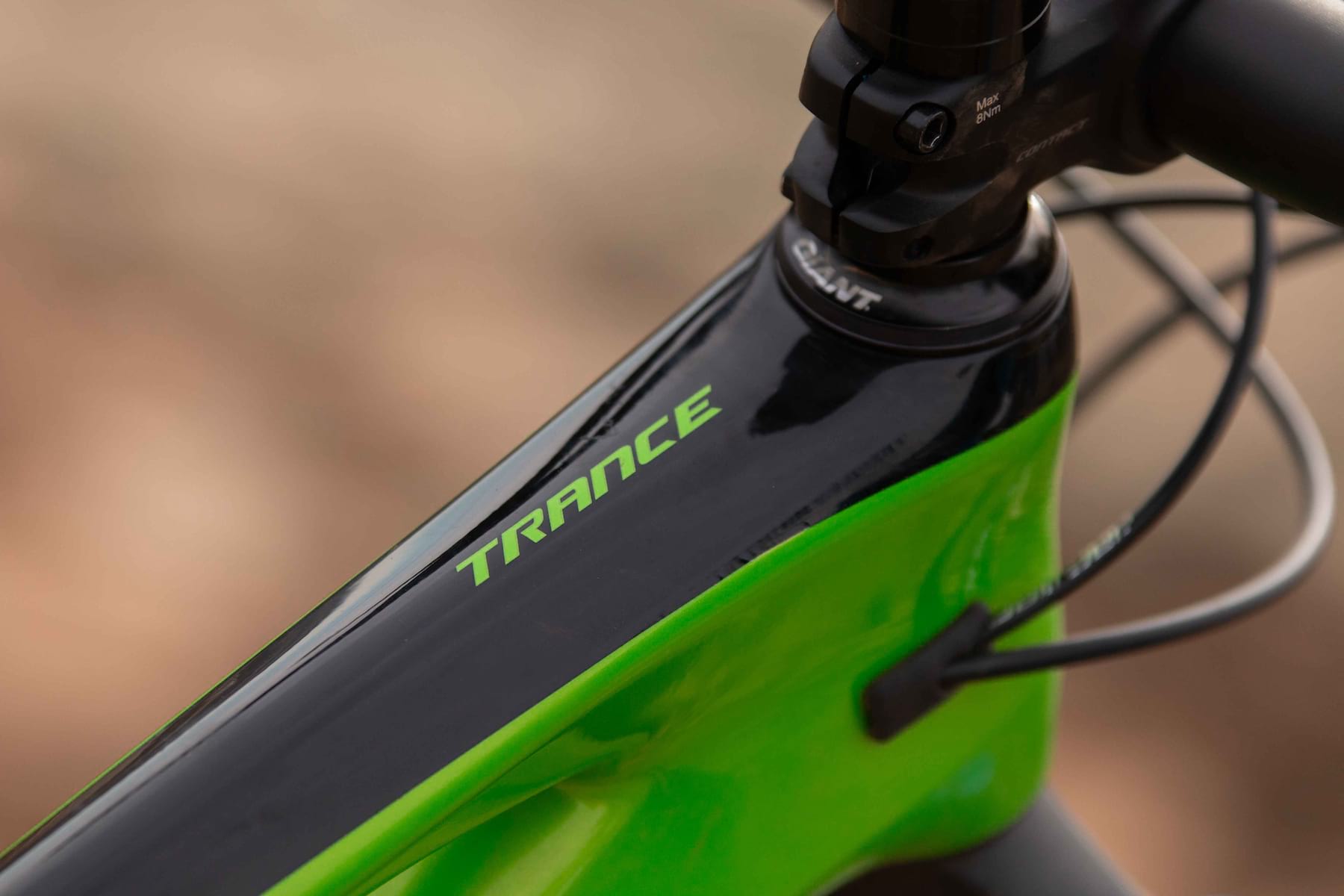
Overall
Don’t let the travel numbers fool you, because the Trance 29 ain’t no welterweight. It may ‘only’ possess 115mm of travel, but with geometry that prioritises descending over climbing proficiency, this rambunctious trail bike delivers outstanding high-speed control. Indeed there is no doubt that this is the most progressive and capable Trance that Giant has ever delivered.
The aggressive geometry does require an engaged riding style to get the most out of it though. And on smoother and tamer trails, it isn’t the most sprightly of trail bikes. Because of the assertive commitment it requires, I’d still recommend the floatier and easier-riding Trance 27.5 for newer and less experienced riders.
For those who want a party bike though, the Trance 29 is an absolute doozy.
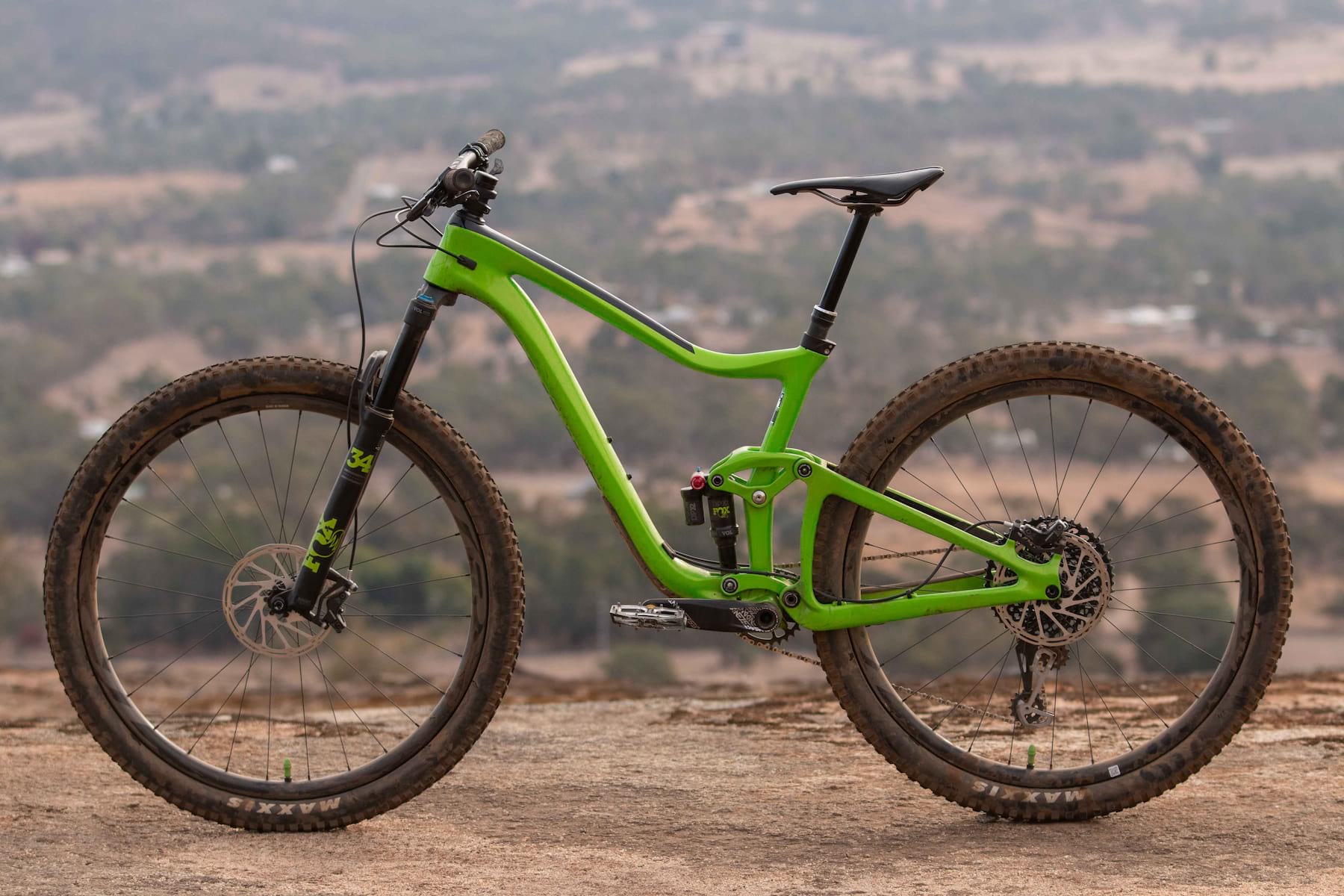
2019 Giant Trance Advanced Pro 29er 1 Specs
- Frame // Advanced Composite Mainframe & Swingarm, 115mm Travel
- Fork // Fox 34 Float, Performance, 44mm Offset, 130mm Travel
- Shock // Fox Float DPX2, Performance Elite, Trunnion Mount, 165×42.5mm
- Hubs // Giant TRX 1, 110x15mm Front & 148x12mm Rear
- Rims // Giant TRX 1 Carbon, 28h Front & Rear, 27mm Internal Rim Width
- Tyres // Maxxis 3C EXO Minion DHF 2.3in Front & Minion DHR II Rear
- Chainset // SRAM Descendent Eagle, DUB, 30t Chainring
- Rear Mech // SRAM GX Eagle, 12-Speed
- Shifter // SRAM GX Eagle, 12-Speed
- Cassette // SRAM GX Eagle, 10-50t, 12-Speed
- Brakes // SRAM Guide T, 180mm Rotors Front & Rear
- Bar // Giant Contact SL Rise , 20mm Rise, 780mm Wide
- Stem // Giant Contact SL, 40mm Long
- Grips // Giant Lock-On
- Seatpost // Giant Contact Switch S, 30.9mm, 125mm Travel
- Saddle // Giant Contact SL, Neutral
- Size Tested // Medium
- Sizes available // Small, Medium, Large & Extra Large
- Confirmed Weight // 12.67 kg (27.87 lbs)
- RRP // $6,299 AUD / £4,399 GBP






I have the Trance 1 alloy model and I love it. I’ve fitted a Oneup dropper lever, Oneup chain guide and a 150mm Giant dropper to personalise it. Initially I was getting plenty of pedal strikes, so I also fitted a 170mm GX Eagle crankset to help with this. After these mods I have the best bike I have ever owned. Highly recommended